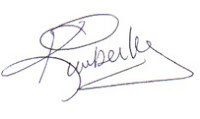Ideally, the order in which images are taken needs to be established before arrival on the location and can easily be established by some kind of scouting. Natural lighting through windows, on exterior faces, etc. can determine what order images will be shot in. As a very rough rule of thumb, each individual image can take from 45 to 90 minutes to set up, properly stag with props and furniture arrangement, and photograph. However, some of the highest end architectural photographers can take several hours for set up, primarily to position lighting. I know of one of the top photographers that can has been known to use 200+ lights on a single image and it took eight hours to achieve his single, award-winning shot.
Photography Staging Area
Talk with the photographer about what kind of staging area needs are required. He/she will need space for cases, lighting assembly, and, if the photographer doesn’t work with their camera tethered to a display, a workstation to review images after the shot. Depending on the amount of equipment and props required, these needs can be just a few square feet, but generally average about 10x10.
Your Input - How Much Are You Involved?
Photography is a collaborative effort, but how this is handled varies from photographer to photographer. My approach is working with you, listening to your vision for the image, your preferences, learning what you’re trying to achieve with an image, etc. helps me create an image that hopefully exceeds your expectations. But just like you are a specialist in your field, we are as well, and bring unique experience and creativity to the process as well. If it were easy to just press a button and capture incredible images, you could bring in a high school student or someone from your administrative staff with a good camera.
Potential “Don’ts” When Working With A Photographer
This is varies from photographer to photographer:
- Touching Equipment. Just from a liability standpoint, if you were innocently shift a tripod or a light stand, and it were to fall over... well, you get the picture.
- Looking Through the View Finder/Touching the Camera. Some photographers absolutely don’t like this at all. With more and more photographers shooting tethered, you will be able to see the image instantaneously as soon as it is shot anyway. Besides, again, would you want to accidentally knock over that camera that potentially is worth more than some used cars?
- “Saying Anything But “Yes.” I saw this written on another architectural photographer’s web site as something some photographers demand - and they were referred to as prima donnas. Personally if you were always saying yes to me, I would be worried that you weren’t completely involved in the project, and we might not be accomplishing your vision.
Whether you were there or not, and whether we are your photographer on a project or not, if you have any questions or comments about commissioning architectural photography, please feel free to drop us a line anytime. We'd be happy to help!

Kimberly Blom-Roemer
Photographer
R2 Photography, LLC
r2-photography.com

Kimberly Blom-Roemer
Photographer
R2 Photography, LLC
r2-photography.com
866-722-9506


No comments:
Post a Comment